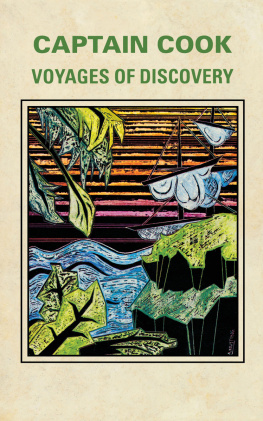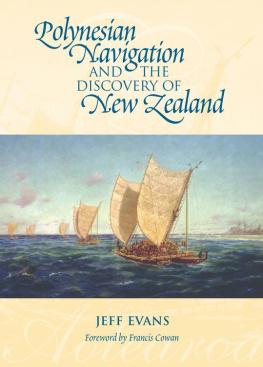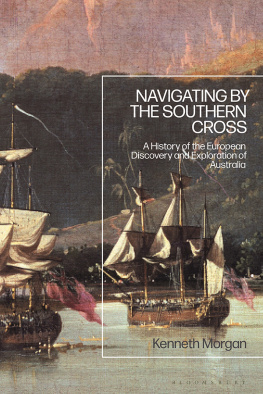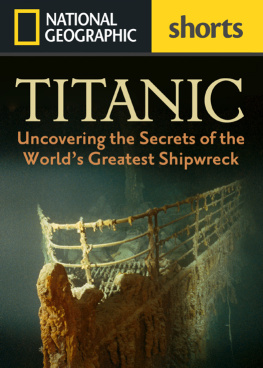Historical Dictionaries of Discovery and Exploration Series Editor: Jon Woronoff
1. Australia, by Alan Day, 2003.
2. Pacific Islands, by Max Quanchi and John Robson, 2005.
Historical Dictionary
of the Discovery
and Exploration of
the Pacific Islands
Max Quanchi
John Robson
Historical Dictionaries of
Discovery and Exploration, No. 2

SCARECROW PRESS, INC.
Published in the United States of America
by Scarecrow Press, Inc.
A wholly owned subsidiary of
The Rowman & Littlefield Publishing Group, Inc.
4501 Forbes Boulevard, Suite 200, Lanham, Maryland 20706
www.scarecrowpress.com
PO Box 317
Oxford
OX2 9RU, UK
Copyright 2005 by Max Quanchi and John Robson
All rights reserved. No part of this publication may be reproduced, stored in a retrieval system, or transmitted in any form or by any means, electronic, mechanical, photocopying, recording, or otherwise, without the prior permission of the publisher.
British Library Cataloguing in Publication Information Available
Library of Congress Cataloging-in-Publication Data
Quanchi, Max.
Historical dictionary of the discovery and exploration of the Pacific islands / Max Quanchi, John Robson.
p. cm. (Historical dictionaries of discovery and exploration ; no. 2)
Includes bibliographical references.
ISBN 0-8108-5395-7 (hardcover : alk. paper)
1. OceaniaDiscovery and explorationDictionaries. 2. Pacific AreaDiscovery and explorationDictionaries. 3. OceaniaHistoryDictionaries. 4. Pacific AreaHistoryDictionaries. 5. OceaniaDictionaries. 6. Pacific AreaDictionaries. I. Robson, John, 1949 II. Title. III. Series.
DU19.Q36 2005
995'.003dc22
2005010010
 The paper used in this publication meets the minimum requirements of American National Standard for Information SciencesPermanence of Paper for Printed Library Materials, ANSI/NISO Z39.48-1992.
The paper used in this publication meets the minimum requirements of American National Standard for Information SciencesPermanence of Paper for Printed Library Materials, ANSI/NISO Z39.48-1992.
Manufactured in the United States of America.
Contents
Jon Woronoff
Editors Foreword
In the annals of discovery and exploration no chapter is more exciting and adventuresome, even romantic, if you will, than the exploration of the Pacific Ocean. But it was, indeed, driven by a search for islands, even atolls, as well as a great South Land and a Northwest Passage, neither of which were found because they did not exist. But the islands did, and they were encountered one after the other, sometimes as the result of careful investigation, more often because of hazard and happenstance. The motives behind all this were often crudely political or crassly commercial but they also included more altruistic aspects, such as mapping the globe and scientific progress. The outcome, sometimes but not always beneficial for the intruding Europeans and Americans, was frequently disastrous for the lands, peoples, and cultures they discovered. But this discovery worked in both directions, and the Islanders came to know the outside world and, as the authors indicate, the intruders also gradually learned more about themselves.
Max Quanchi has published extensively on the Pacific Islands, its peoples, and cultures. John Robson is a leading specialist on Captain James Cook, and fortunately also a librarian for many years, and presently the map librarian at the University of Waikato in Hamilton, New Zealand. This obviously benefited the bibliography, which he produced. There is no question that a passion for constantly uncovering and verifying more of the absorbing story of Oceania is shared by the authors, with Max Quanchi presently focusing on colonial photography and John Robson on James Cook and Oceanias maps.
Historical Dictionary of Exploration and Discovery of the Pacific Islands has the broadest scope of any volume in the series. The introduction sums up this great adventure while the details are traced in hundreds of entries on the nations and explorers, the voyages and expeditions, the initial contacts with the islanders in many locations, and the general background. Of particular significance is the bibliography, very extensive and yet only selective given the enormous number of works published, but which is easy enough to navigate since the titles are meticulously divided and subdivided by type of work, topic, place, and period.
Jon Woronoff
Series Editor
Preface
This historical dictionary and bibliography provides details of European exploration of the Pacific Islands and associated intellectual, scientific, artistic, and cultural developments in Europe and the Pacific. The dictionary includes the names of national heroes and their barques, fluyts, and caravels as well as entries on longitude, scurvy, Nouvelle Cythre, speculative geographers and dreamers, transculturites, mythical Polynesian voyagers, and an officer who climbed on the bowsprit of a ship heading into pack ice just to say jokingly to James Cook that he had gone farther south than the rest of the crew. We want this to be comprehensive and go beyond a listing of daring, resolute, and exemplary explorers and the islands they added to the European charts of the Pacific. We have included exploration through to the present with reference to El Nio, marine archaeology, and the expanding scholarly study of cross-cultural encounters and indigenous histories.
In the case of surnames, the French convention has been followed, for example, Marion Dufresne rather than the English custom of noting his name as just Dufresne or Du Fresne. Honorifics, such as Comte, Chevalier, Sir, and Ritter, have been omitted. Military ranks, such as Admiral, Captain, and Lieutenant, have also been omitted.
To take advantage of the links between individual entries, readers are advised to follow the prompts in bold. For example, the well-known shipwreck of the Antelope in Palau in 17831784 is not described at length, but readers can follow the event and related histories through a series of entries, including Henry Wilson, Lee Boo, Palau-early European contacts, and George Keate. James Cook, already the subject of more than 6,000 books and articles, has a small entry in the Dictionary, but his impact on related individuals, events, and histories can be followed by going to 38 other entries indentified in bold in the text or in the See section at the end of his entry.
The dictionary and the bibliography were completed separatelythe Dictionary in Brisbane and the Bibliography in Hamiltonbut they complement each other in ways made possible with modern technology despite being situated on either side of the Tasman Sea and meeting only once early in the planning. We thank colleagues who answered tricky questions and particularly Max Shekleton and Jean-Louis Boglio and we acknowledge the work of our predecessors in compiling similar Pacific explorer reference worksJohn Cawte Beaglehole (1934), Peter Buck (1953), Andrew Sharp (1960), Oscar Spate (19791988), Jacques Brosse (1983), and John Dunmore (1992). We also thank the authors of related dictionaries in the Scarecrow Press Historical Dictionary series and the authors of monographs, multivolume works, and edited reprints of 16th19th-century journals that continue to provide a dazzling amount of detail and insight.
Max Quanchi, Brisbane, Australia
John Robson, Hamilton, New Zealand











 The paper used in this publication meets the minimum requirements of American National Standard for Information SciencesPermanence of Paper for Printed Library Materials, ANSI/NISO Z39.48-1992.
The paper used in this publication meets the minimum requirements of American National Standard for Information SciencesPermanence of Paper for Printed Library Materials, ANSI/NISO Z39.48-1992.